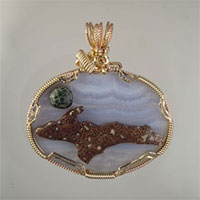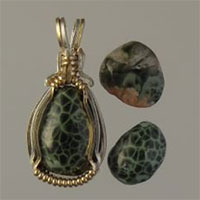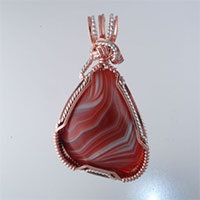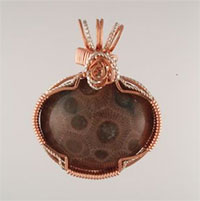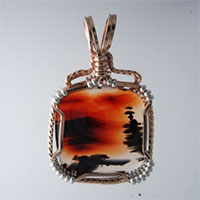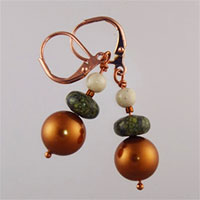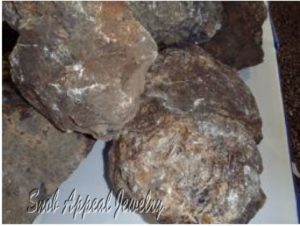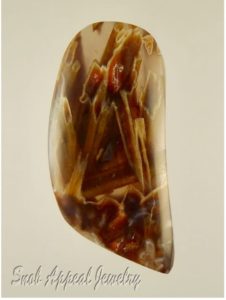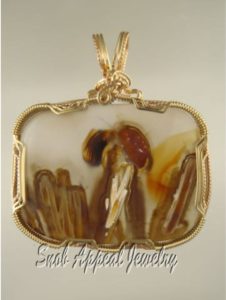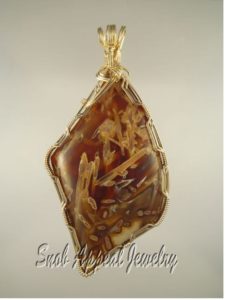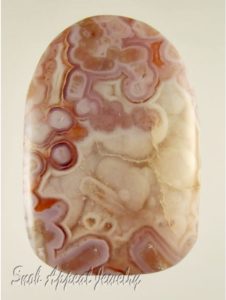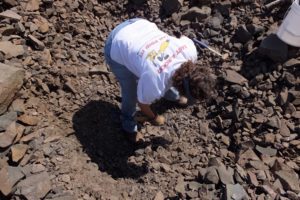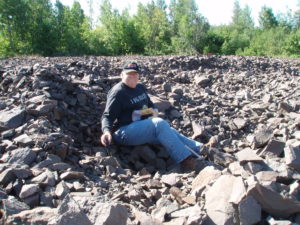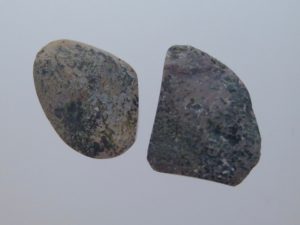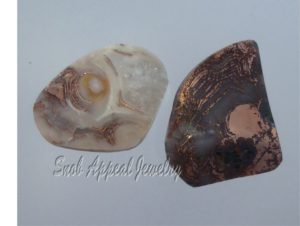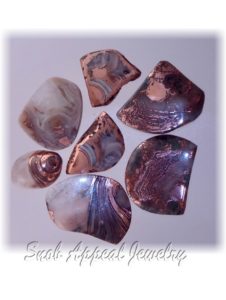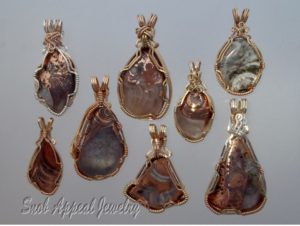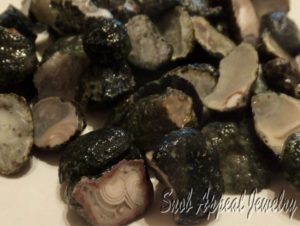I’ve built a custom tumbling unit that will handle three 12# barrels at one time. You might ask, what has has that to do with Turkish Stick Agate? I also bought a Diamond Pacific Cab Machine in Tucson last February. So how do these things connect?
I found some absolutely fantastic Turkish (Pseudomorph) Stick Agate rough rock at the Keno Show in Tucson. It was very pricey old stock, but the best material of it’s kind I’ve seen in many years. I actually spent almost an hour searching through buckets of this stuff to find the cream of the old stock crop. Finding this Stick Agate happened after I bought a used Titan from a dealer at the 28th Street Show. The deal with the Titan included spare parts, wheels and several containers of tumbling grit (which had nothing to do with the Titan) that the dealer also threw in as he was getting out of the lapidary business.
(A pseudomorph is when the original crystal form of one mineral is occupied by another, chemically or structurally different species. I love pseudomorphs (from the Greek “false form”). Here’s a tip: If you see triangular shapes occupying a rock you possess, it is most likely a pseudomorph of Aragonite. When someone asks what those triangular shapes are in a rock it also makes you look smart when you say “Oh that’s a pseudomorph of Aragonite” (Better if you practice saying “Pseudomorph” so it just flows easily off your tongue.)
Move ahead to April: I got back home and unloaded all the stuff, started cutting and polishing new rock. I ask Bonnie about the stick agate; she looks and can’t find it. A picture of this Turkish Stick Agate had appeared in the February blog, so I had proof that this was a genuine purchase, not just something I thought about buying. I searched and searched for the Stick Agate and I cannot find it anywhere. A note is posted on the refrigerator “FIND STICK AGATE”. When notes are posted on the refrigerator they become points of stress until acted upon (I know you guys know this).
Move ahead to October: I’m tumbling some Lakers for drilling and reach the 600 grit stage. While looking for 600 grit in one of the boxes I got with the Titan, I FIND THE STICK AGATE. I do know there are Desert Gnomes in Arizona, and I think those little bastards intentionally hid that Stick Agate bag (It could never have been Bonnie or I that did this). That’s my story……..
ALL my stress is lifted from my shoulders, I can quit my anxiety counseling, take less drugs, and REMOVE THAT DAMN MEMO FROM THE FRIDGE!!! I will always remember October 9th, 2017 as one of the highlight days of my entire life!!
Here’s the really great thing: the Stick Agate is even more beautiful than I remembered it! The saws and Titan are simultaneously humming with Stick Agate Bliss. I think I’ll make myself a new pendant in celebration of my stress relief.
Now that our Missing Rock Saga is explained, let’s talk about Turkish Stick Agate shall we? From Cubuk, Northern Ankara, Turkey. TSA (Not Airport security) comes in various forms of Pseudomorphic Aragonite in Chalcedony. The Aragonite needles are hollow tubes that formed in the shape of church steeples. Long needles forming fans are considered the best, but these agates can also contain sagenite or fortification areas. Some TSA has tubes and not the normal Pseudomorphic Sticks.
(Aragonite and Calcite are the same composition. The only differences are that the Calcite has form differently and under different conditions. Aragonite is Orthorhombic while Calcite forms in a rhombohedral crystal. Both Calcite and Aragonite become pseuddomorphs in other minerals because of their sensitivity to acids.)
One Stick Agate I re-found had a rare reddish background color. This was the one I grabbed for my personal pendant.
Another piece had beautiful dark pink banding, and looked nothing like the other Stick Agate in the piles I sorted. One cab showed white botrioildal Quartz under clear Quartz with random reddish-brown tubes throughout the gemstone.
To add to the fun I saw one large bug or a couple bugs on a stick in one cabochon. Really extraordinary stuff. We’ve been celebrating the prodigal TSA for two weeks now. May you find your missing rocks.
You can find our current selection of these pendants at our Turkish Stick Agate Pendant page!


